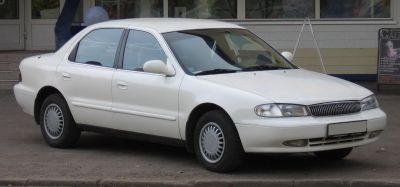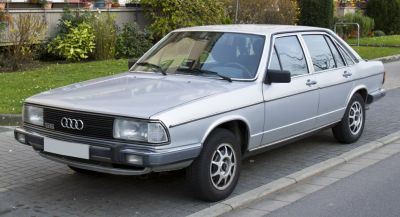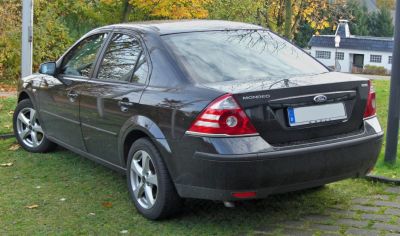 1996 Hyundai Sonata III (Y3, facelift 1996) Dimensions, Size & Specs
1996 Hyundai Sonata III (Y3, facelift 1996) Dimensions, Size & SpecsMeasurements of the 1996 Hyundai Sonata III, engineered for optimal performance and comfort
| Dimensions | |
|---|---|
| Length: | 4700 mm185.0 in15.4 ft |
| Width: | 1770 mm69.7 in5.8 ft |
| Height: | 1405 mm55.3 in4.6 ft |
| Ground Clearance: | 170 mm6.7 in0.6 ft |
| Trunk Capacity: | 373-375 liter13.2-13.2 cu ft |
| Weight Specifications | |
| Curb Weight: | 1275-1385 kg2811-3053 lbs |
| Maximal permitted Weight: | 1740-1910 kg3836-4211 lbs |
| Roof Load: | 70 kg154 lbs |
| Tire Specifications | |
| Rims Sizes: |
|
| Tire Sizes: |
|
The 1996 Hyundai Sonata III (Y3 facelift) represents the mid-size sedan segment with balanced dimensions and a practical design. Produced between 1996 and 1998, this generation of Sonata features a length of 4700 mm (185.0 inches), a width of 1770 mm (69.7 inches), and a height of 1405 mm (55.3 inches), offering a spacious yet manageable profile suitable for both city and highway driving. The ride height or ground clearance stands at 170 mm (6.7 inches), providing adequate clearance for varied road conditions.
This sedan’s curb weight varies between 1275 kg to 1385 kg (2811 to 3054 lbs), depending on the variant and equipment, with a maximum permissible weight ranging from 1740 kg to 1910 kg (3836 to 4211 lbs). The thoughtful engineering delivers a good balance between nimbleness and stability. Its luggage compartment offers a practical capacity of 373 to 375 liters (13.2 to 13.2 cubic feet), ideal for everyday use and travel.
Hyundai equipped this Sonata generation with rim options of 14 and 15 inches, paired respectively with tire sizes 195/70 R14 and 205/60 R15. This combination supports comfortable driving and effective tire-road contact. Furthermore, the vehicle roof load capacity is rated at 70 kg (154 lbs), allowing additional carrying options via roof racks.
Overall, the 1996 Hyundai Sonata III (Y3 facelift) Sedan stands out as a reliable and versatile choice in the mid-90s sedan market, combining practical dimensions, modest curb weight, and functional load-carrying capabilities for everyday and family use.
Discover the standout features that make the 1996 Hyundai Sonata III a leader in its class
Have a question? Please check our knowledgebase first.
The Hyundai Sonata III (Y3, facelift 1996) has an overall length of 4700 mm (approximately 185 inches), a width of 1770 mm (about 69.7 inches), and a height of 1405 mm (roughly 55.3 inches). These dimensions contribute to the car's mid-size sedan classification, offering a balanced footprint that provides interior comfort while maintaining ease of maneuverability in urban and suburban settings.
The curb weight of the 1996 Hyundai Sonata III ranges from 1275 kg to 1385 kg (approximately 2810 to 3053 pounds). Its maximum weight, which includes the vehicle’s maximum load capacity, ranges between 1740 kg and 1910 kg (about 3836 to 4210 pounds). This weight range reflects variations based on trim levels and equipment packages, affecting fuel efficiency, handling, and overall performance.
The Hyundai Sonata III facelift from 1996 offers a luggage capacity between 373 and 375 liters (about 13.2 to 13.2 cubic feet). This is fairly standard for mid-size sedans of that era, providing sufficient space for everyday needs such as groceries, luggage for short trips, or golf equipment. The trunk’s practical size makes it convenient without compromising the rear passenger space.
With a length of 4700 mm (185 inches), width of 1770 mm (69.7 inches), and height of 1405 mm (55.3 inches), the Sonata III comfortably fits into a standard single-car garage, which typically accommodates vehicles about 4800 mm (189 inches) long and 2400 mm (94.5 inches) wide. The car’s dimensions make parking and garage storage manageable for most users without requiring special accommodations.
The ride height or ground clearance of the 1996 Sonata III is 170 mm (approximately 6.7 inches). This moderate clearance balances the car’s stability and comfort, providing enough height to navigate common road obstacles such as speed bumps and rough patches without sacrificing handling or aerodynamic performance. It’s well-suited for both city and highway driving conditions.
The 1996 Hyundai Sonata III facelift comes with rim sizes of 14 or 15 inches. Compatible tire sizes include 195/70 R14 and 205/60 R15, offering a good balance between ride comfort and handling. These sizes were typical for mid-size sedans during this period, with tires designed to provide grip and safety in various road conditions while maintaining fuel efficiency.
Compared to its predecessor, the Hyundai Sonata II, the Sonata III (Y3, facelift 1996) grew slightly in dimensions, particularly in length and width. The increase to 4700 mm in length and 1770 mm in width allowed for more interior space, improving passenger comfort and trunk capacity. This shift marked Hyundai's intent to better compete in the mid-size sedan segment by offering a more spacious and comfortable vehicle.
The Sonata III's dimensions—4700 mm length, 1770 mm width, and 1405 mm height—are competitive with contemporaries like the Toyota Camry and Honda Accord. Its 373-375 liter trunk capacity and moderate ground clearance are typical for mid-sized sedans of the 1990s. While it may weigh slightly less than some rivals, the Sonata offers a roomy interior and a practical set of features, positioning it as a strong value proposition.
The maximum roof load for the 1996 Hyundai Sonata III facelift is 70 kg (approximately 154 pounds). This capacity allows owners to safely install roof racks for carrying items like bicycles, luggage boxes, or sports equipment. However, it’s important to adhere strictly to this limit to avoid adversely affecting vehicle handling, fuel consumption, and roof integrity.
The curb weight of the Sonata III facelift varies between 1275 kg and 1385 kg (2810 to 3053 pounds) due to differences in trim levels, optional features, engine types, and transmission choices offered during production. Higher trims with more equipment and larger engines typically push the weight higher. This weight influences acceleration, fuel efficiency, and handling balance, meaning lighter models may feel more agile while heavier variants provide greater stability.
Discover similar sized cars.

| Model Year: | 1978 |
|---|---|
| Length: | 4705 mm185.2 in |
| Width: | 1722-1730 mm67.8-68.1 in |
| Height: | 1410 mm55.5 in |

| Production: | 1996-1998 |
|---|---|
| Model Year: | 1996 |
| Length: | 4696 mm184.9 in |
| Width: | 1770 mm69.7 in |
| Height: | 1420 mm55.9 in |

| Production: | 1979-1982 |
|---|---|
| Model Year: | 1979 |
| Length: | 4683 mm184.4 in |
| Width: | 1768 mm69.6 in |
| Height: | 1390 mm54.7 in |

| Production: | 1976-1979 |
|---|---|
| Model Year: | 1976 |
| Length: | 4680 mm184.3 in |
| Width: | 1768 mm69.6 in |
| Height: | 1390 mm54.7 in |

| Production: | 1979-1982 |
|---|---|
| Model Year: | 1979 |
| Length: | 4695 mm184.8 in |
| Width: | 1768 mm69.6 in |
| Height: | 1390 mm54.7 in |

| Production: | 2012-2014 |
|---|---|
| Model Year: | 2012 |
| Length: | 4729 mm186.2 in |
| Width: | 1782 mm70.2 in |
| Height: | 1465 mm57.7 in |

| Production: | 1986-1994 |
|---|---|
| Model Year: | 1986 |
| Length: | 4768 mm187.7 in |
| Width: | 1933 mm76.1 in |
| Height: | 1435 mm56.5 in |

| Production: | 2001-2007 |
|---|---|
| Model Year: | 2001 |
| Length: | 4731 mm186.3 in |
| Width: | 1812 mm71.3 in |
| Height: | 1429 mm56.3 in |
